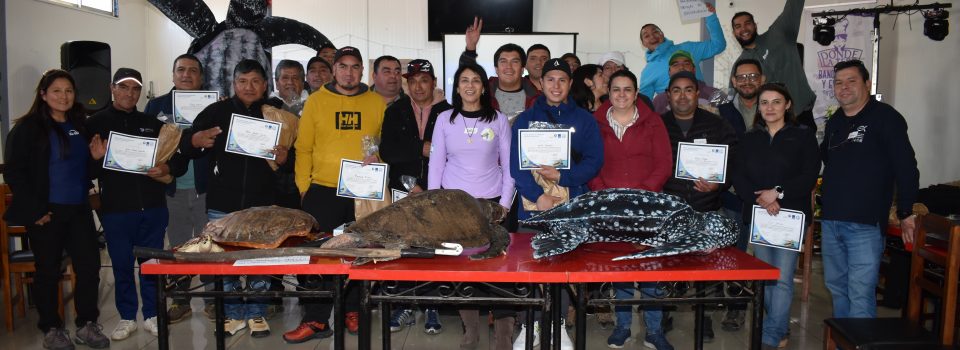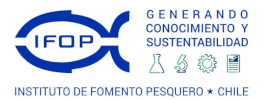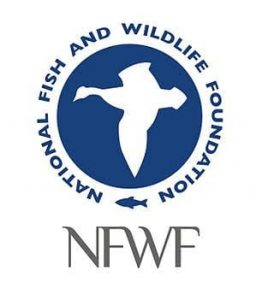Artisanal and industrial fishermen from Chilean fishing fleets learned about techniques for handling, resuscitating and releasing sea turtles
December 19th, 2022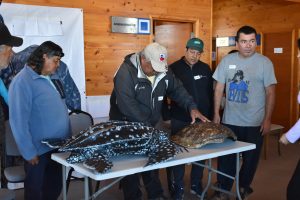 Aiming to minimize sea turtles’s incidentally caught by Chilean fishing fleets mortality, Fisheries Development Institute (IFOP) jointly with MarViva Foundation carried out a series of training workshops under ” Reduce Eastern Pacific leatherback sea turtle’s bycatch in Chilean fisheries” binational project framework . This project is financed by United States ‘s National Fish and Wildlife Foundation (NFWF).
Aiming to minimize sea turtles’s incidentally caught by Chilean fishing fleets mortality, Fisheries Development Institute (IFOP) jointly with MarViva Foundation carried out a series of training workshops under ” Reduce Eastern Pacific leatherback sea turtle’s bycatch in Chilean fisheries” binational project framework . This project is financed by United States ‘s National Fish and Wildlife Foundation (NFWF).
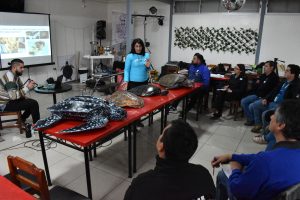 “For IFOP it is very important to socialize handling and release techniques with fishermen and to receive their feedback, so that inputs can be brought to the “ Sea Turtles Return National Protocol” that will be implemented as a national effort. Fishermen’s response was very positive, and they are willing to implement all recommendations in order to reduce these species mortality”, highlighted Dr. Patricia Zárate, Head of IFOP Highly Migratory Resources Monitoring Project – Ecosystemic Approach (SRAM ECO).
“For IFOP it is very important to socialize handling and release techniques with fishermen and to receive their feedback, so that inputs can be brought to the “ Sea Turtles Return National Protocol” that will be implemented as a national effort. Fishermen’s response was very positive, and they are willing to implement all recommendations in order to reduce these species mortality”, highlighted Dr. Patricia Zárate, Head of IFOP Highly Migratory Resources Monitoring Project – Ecosystemic Approach (SRAM ECO).
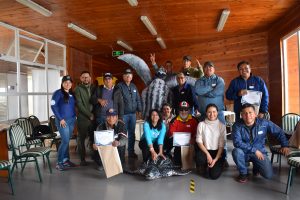 A total of 10 workshops were held between October 20th and 28th in the cities of Lebu, Iquique and Arica and aimed at fishermen belonging to the net, longline and purse-seine fleets, as well as officials from private public sector. In addition to release and handling techniques, sea turtle biology aspects, species identification, connectivity, and population status of species present in Chilean waters were included.
A total of 10 workshops were held between October 20th and 28th in the cities of Lebu, Iquique and Arica and aimed at fishermen belonging to the net, longline and purse-seine fleets, as well as officials from private public sector. In addition to release and handling techniques, sea turtle biology aspects, species identification, connectivity, and population status of species present in Chilean waters were included.
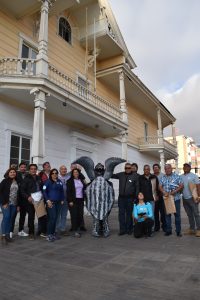 The workshop’s speakers and instructors were researchers Patricia Zárate, Ilia Cari and Ljubitza Clavijo from SRAM ECO project, biologist Rotney Piedra from Costa Rica Conservation Areas National System (SINAC) and Elizabeth Gutiérrez from Peru Coastal Areas and Marine Resources Organization(ACOREMA). Also representing MarViva Foundation were present the biologist Cristina Sánchez and community psychologist Pablo González and social anthropologist Elías Esper from Agroecológic Perspective NGO.
The workshop’s speakers and instructors were researchers Patricia Zárate, Ilia Cari and Ljubitza Clavijo from SRAM ECO project, biologist Rotney Piedra from Costa Rica Conservation Areas National System (SINAC) and Elizabeth Gutiérrez from Peru Coastal Areas and Marine Resources Organization(ACOREMA). Also representing MarViva Foundation were present the biologist Cristina Sánchez and community psychologist Pablo González and social anthropologist Elías Esper from Agroecológic Perspective NGO.
“Satellite markers use has made it possible to identify that individuals that nest on Costa Rica’s beaches move south to reach Chilean waters where they spend between 4 and 7 years feeding, before returning to Costa Rican beaches. For the Conservation Areas National System, it has been very important to share with the Chilean fishing sector sea turtle’s conservation efforts that Costa Rica has been carrying out and to learn from its experience in this South American country,” said Rotney Piedra, from SINAC.
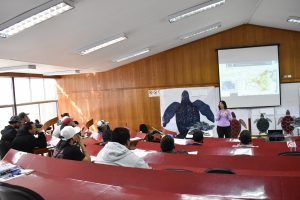 As part of this workshop, fishermen were provided with basic equipment so that they can carry out recommended maneuvers such as identification cards, measuring tapes, an unhooker and a line cutter. In total, 151 people were trained, of which 114 were fishermen from various unions and guilds, and 37 officials from different public and private entities, such as Fisheries and Aquaculture Undersecretariat (SUBPESCA), National Fisheries Service (SERNAPESCA ), Maritime Territory General Directorate and Merchant Marine (DIRECTEMAR), Environment Ministry (MMA), Sea Applied Research Center (CIAM), Lebu Fishing Port, Arica Municipality, TortuArica NGO, Corporación Norte Pesquero and IFOP.
As part of this workshop, fishermen were provided with basic equipment so that they can carry out recommended maneuvers such as identification cards, measuring tapes, an unhooker and a line cutter. In total, 151 people were trained, of which 114 were fishermen from various unions and guilds, and 37 officials from different public and private entities, such as Fisheries and Aquaculture Undersecretariat (SUBPESCA), National Fisheries Service (SERNAPESCA ), Maritime Territory General Directorate and Merchant Marine (DIRECTEMAR), Environment Ministry (MMA), Sea Applied Research Center (CIAM), Lebu Fishing Port, Arica Municipality, TortuArica NGO, Corporación Norte Pesquero and IFOP.
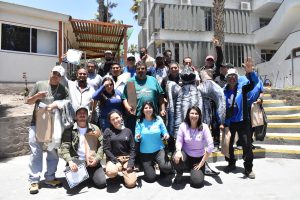 Worldwide there are 7 species, of which 5 are found in Chilean waters: the leatherback (Dermochelys coriacea), loggerhead (Caretta caretta) and hawksbill (Eretmochelys imbricata) turtles are Critically Endangered, the green turtle (Chelonia mydas) is Endangered and the Olive Ridley Turtle (Lepidochelys olivacea) in the Vulnerable category. A clear example of sea turtles delicate population status in eastern Pacific leatherback sea turtle can be seen, which has reported a more than 90%population reduction since the mid-1980s. Due to this, in the countries where these species nest, great efforts are being made to prevent their eggs exploitation as is the case in Costa Rica, and in the countries where they feed, for example, Chile and Peru, the greatest effort is performs in reducing mortality due to interaction with fishing. For this reason, Dr. Zárate mentions “it is necessary to make efforts to improve the probability that these animals that are feeding in our waters will return to their nesting beaches to lay eggs. Proper handling and release of incidentally caught sea turtles is key to increasing the survival of this species.”
Worldwide there are 7 species, of which 5 are found in Chilean waters: the leatherback (Dermochelys coriacea), loggerhead (Caretta caretta) and hawksbill (Eretmochelys imbricata) turtles are Critically Endangered, the green turtle (Chelonia mydas) is Endangered and the Olive Ridley Turtle (Lepidochelys olivacea) in the Vulnerable category. A clear example of sea turtles delicate population status in eastern Pacific leatherback sea turtle can be seen, which has reported a more than 90%population reduction since the mid-1980s. Due to this, in the countries where these species nest, great efforts are being made to prevent their eggs exploitation as is the case in Costa Rica, and in the countries where they feed, for example, Chile and Peru, the greatest effort is performs in reducing mortality due to interaction with fishing. For this reason, Dr. Zárate mentions “it is necessary to make efforts to improve the probability that these animals that are feeding in our waters will return to their nesting beaches to lay eggs. Proper handling and release of incidentally caught sea turtles is key to increasing the survival of this species.”
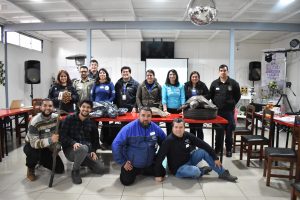 Dr. Zárate added “I want to express my gratitude to National Fisheries and Aquaculture Service for facilitating dissected shells and turtles use for these workshops development , which allowed practical activities realization facilitating knowledge transfer to the workshop’s participants “.
Dr. Zárate added “I want to express my gratitude to National Fisheries and Aquaculture Service for facilitating dissected shells and turtles use for these workshops development , which allowed practical activities realization facilitating knowledge transfer to the workshop’s participants “.
Finally, researcher M. Sc Ilia Cari indicated that “the workshops held for fishermen and officials were a complete success, not only due to the attendees active participation but also due to the approach given to the fishing sector and its commitment and willingness as participants to apply acquired knowledge in a new encounter with sea turtles and thus provide them with a greater probability of survival facing incidental interactions with fishing gear and equipment”.
These workshops held in Chile are part of the country’s commitments to the Sea Turtles Protection and Conservation Inter-American Convention (IAC).
Press related links:
